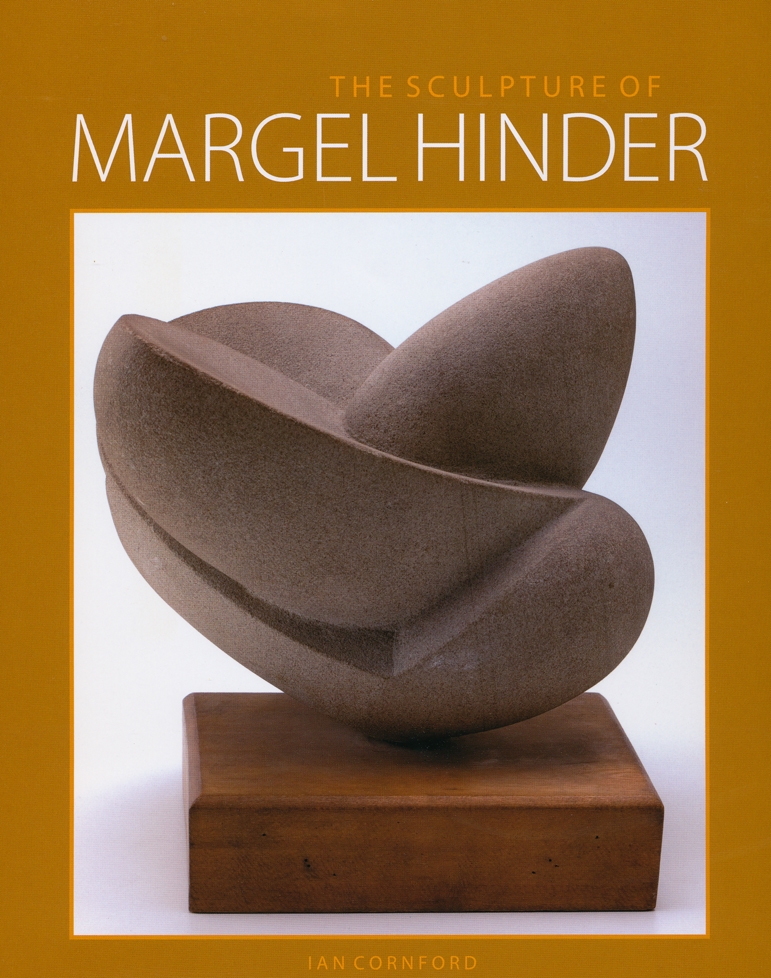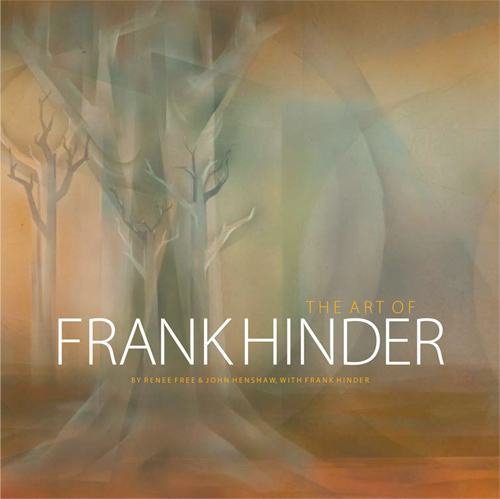THE SCULPTURE OF MARGEL HINDER
by Ian Cornford
Phillip Mathews Book Publishers, Sydney 2013
156 pages, 1st Edition
Cosmopolitan, sophisticated, and determinedly international in outlook, American-born Margel Hinder (1906–1995) was one of Australia's most creative modernist sculptors. In America, she experienced at first hand works by Brancusi, Gabo, Pevsner, Archipenko and Epstein, who were to have a major impact on the directions of 20th century modernist sculpture. Together with her husband, artist Frank Hinder, she was also exposed in the 1930s to early exhibitions of modern art, and the resurgence of interest in the Renaissance. She absorbed the belief that the arts, science, mathematics, reason and emotion all contributed to the production of meaningful and aesthetically important art reflecting its era.
Margel's mature works in wood, metals and mixed media are concerned with movement, light, space and time. Sculptures created, after her involvement in experiments in perception and camouflage during World War II, force the viewer – through movement – to engage in constructing meaning and a sense of aesthetic completeness. Indeed, her focus upon the construction of meaning by the viewer, and the successful incorporation of aesthetically satisfying movement into her sculpture, arguably make worthwhile contributions to international modernist theory and practice.
In rare exposures in international, modernist sculpture exhibitions, Margel Hinder's abstract work received high praise from judges and critics. As a prize winner in the 1953 Unknown Political Prisoner Competition, she was ranked alongside internationally renowned sculptors Calder, Bill, Gabo, Pevsner and Hepworth.
Margel Hinder and her sculpture have been neglected in standard accounts of Australian art history, despite the excellence of her work. Caught up in a parochial rejection of international modernism as a threat to national identity, that effectively extended over many decades, in the 20th century, she and fellow artists Frank Hinder, Grace Crowley, Rah Fizelle and Ralph Balson because casualties of the earlier, political 'culture wars'.
As a sculptor who spent so much time and creative energy producing public sculpture to be enjoyed by all, she deserves to be better known. This book seeks to firmly establish the importance of Margel Hinder in the history of Australian art though the excellence of her work, its innovation, and links to international modernism.

THE ART OF FRANK HINDER
by Renee Free & John Henshaw with Frank Hinder
Phillip Mathews Book Publishers, Sydney 2011
180 pages, circa 150 illustrations in colour, 1st Edition
Frank Hinder's work has a range wide in subject matter,styles and media. His training in Dynamic Symmetry in America led him, on the return to Sydney, to join Grace Crowley and Ralph Balson as one of the Sydney Modernists of the 1930s and 1940s. His interest in dynamism distinguished his work as closer to Futurism than Cubism. During the war his geometric abstracts, like those of Balson and Crowley were Sydneys earliest abstracts. Contemporaneously he was serving in Camouflage, painting Bomber Crash and other war subjects from personal experience. After the war he developed his pre-war Wynyard series into post-war darkness, but with re-emerging light, as in Subway Escalator, 1953. In 1952, Hinder won the Blake prize for Religious art with Flight into Egypt.
During the second half of the 20th century, Hinder devoted himself to abstract art, to make visible modern scientific and philosophic thought, from the Pythagoreans to Einstein and beyond. Hinder believed in the connectedness of everything, in the harmony of the universe. Light, in paint and in light boxes, symbolised beauty and human intelligence. The final decade saw an integration of semi-abstracts and luminous abstracts; matter dissolved into energy, vibrations, memory.
Renee Free gained a B.A. in Sydney in 1956 and a Postgraduate Academic Diploma in the History of Art from the Courtauld Institute, London University in 1961. She joined the Art Gallery of New South Wales as Assistant in 1966 and retired as Senior Curator of European Art in 1996.
John Henshaw was a friend of Frank Hinder, colleague, artist, teacher, who died before this book could become a reality. The book has been published due to the support of the artists daughter, Enid Hawkins.
